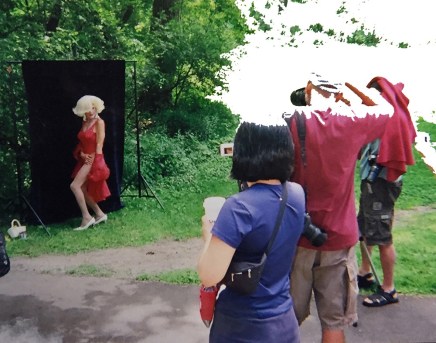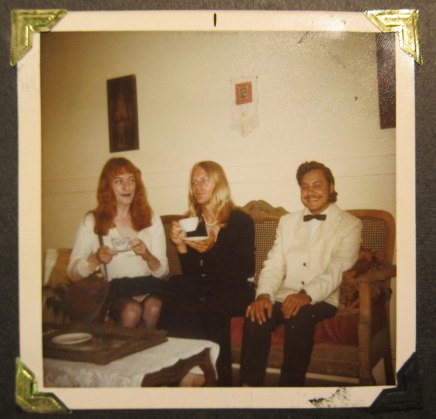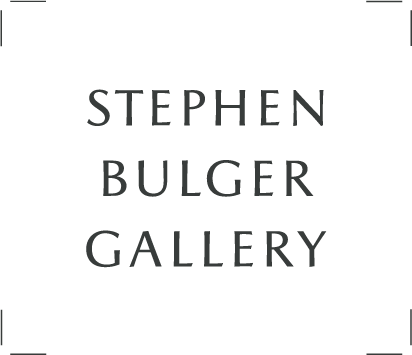TORONTO, March 27, 2018 - The Family Camera Network (FamCam) and the Canadian Lesbian and Gay Archives (CLGA) are pleased to announce the opening of Queering Family Photography, an original exhibition that explores how family photographs reflect, shape, and expand queer forms of affective connection and kinship. On display from Saturday, April 21 to Saturday, May 26, 2018 at the Stephen Bulger Gallery, the exhibition is a featured exhibition of the 2018 Scotiabank CONTACT Photography Festival.
Queering Family Photography invites visitors to look closely at family photography and their role in shaping and restructuring the intimate lives of LGBTQ2+ people. Lead curator Elspeth Brown notes that "LGBTQ2+ people have created 'families' in multiple ways, including families of choice as well as of origin. Photography offers a vital means of projecting queer joy and a potent resource for survival and resilience." Queering Family Photography explores the critical work that queer, trans, and Two-Spirited family photos do in documenting and creating queer modes of belonging--how the emotional attachments of queer family photographs have also sustained LGBTQ2+ lives. The show traces how queer, trans and Two-Spirited people draw on photography to stretch the frame of family to include queer kinships outside the heteronormative, nuclear family model. Queering Family Photography also considers the social, political, and technological factors that structure families, and the creative ways that LGBTQ2+ communities have reimagined kinship. The images capture fleeting moments of love and desire, as well as generational bonds, which are often fractured and even broken by a normalizing state and culture.
Exhibition
Queering Family Photography consists of over 100 objects-including photographs, a video montage of oral history footage and photo albums-drawn from three sources: the collections of the Canadian Lesbian and Gay Archives (CLGA); the Two-Spirited photography collection at the University of Winnipeg; and the queer and trans photographs and oral history videos collected The Family Camera Network (www.familycameranetwork.org), a multi-year research project with six partner institutions supported by the Social Sciences and Humanities Research Council of Canada (SSHRC). The exhibition includes three sections-Instant Intimacies, Domesticities, and Publics-that trace how queer, trans, and Two-Spirit lives have intersected with photography to complicate distinctions between public and private space, creating and celebrating queer modes of kinship in the process.
The first section, Instant Intimacies features candid Polaroid prints from the 1970s-1990s, a technology that brought desires into view while limiting the threat of public exposure, at a time when non-normative sexualities and genders were strictly surveilled and policed. Though Polaroid has declared bankruptcy, its influence persists in our present era of social media, which embraces the immediacy and spontaneity first introduced by these older instant cameras. Domesticities considers the spaces where families-broadly defined-- are formed, made, and remade: as "daddys," sons, daughters, lovers, and fellow activists, whether inside homes, outside domestic dwellings, on the street, at the beach, in a stairwell, and elsewhere. This section considers how domestic images document more than just private spheres; they also redefine domesticity as an ideology that shapes gender roles and polices sexuality. Domesticities also highlights the generational bonds between parents and children, between romantic partners, and even between strangers who, despite the brevity of their connection, come together in defiance of norms and laws that has criminalized queer desire and gender expression. These generational bonds expand queer forms of belonging back into the past and forward into the future. In this way, domestic images bind the private sphere more tightly to the public sphere than is commonly assumed. Publics highlights the spaces where the intersections between these spheres are most visible and where domesticities are overtly politicized. These spaces include the spectacle of parades as well as quotidian sites of encounter, including the highly visible streets of the gay village, and less visible ones such as bathhouses-a pivotal venue for the expression of queer desires that has been a target for state suppression. Publics also shows how events, such as pow-wows, afford an opportunity to reflect on Two-Spirited kinship in relationship to Indigenous cultures and queer modes of belonging. This section also examines how, in a neoliberal era, the spaces for queer chosen families to come together have become gentrified and commodified in a process that has marginalized LGBTQ2+ people on the basis of class and race.
The exhibition has been curated by Elspeth Brown (lead) and Thy Phu, with the assistance of Richard Fung and Sajdeep Soomal. Queering Family Photography draws from The Family Camera Network, which is collecting queer and trans family photos and oral histories about them, with a focus on migration and racialization, the Canadian Lesbian and Gay Archives, and the Two-Spirited Collection from the University of Winnipeg.
Join the Conversation: #FamCam
For more information, please contact co-curator Elspeth Brown at Elspeth.brown@utoronto.ca, click on this link, or email info@familycameranetwork.org.





